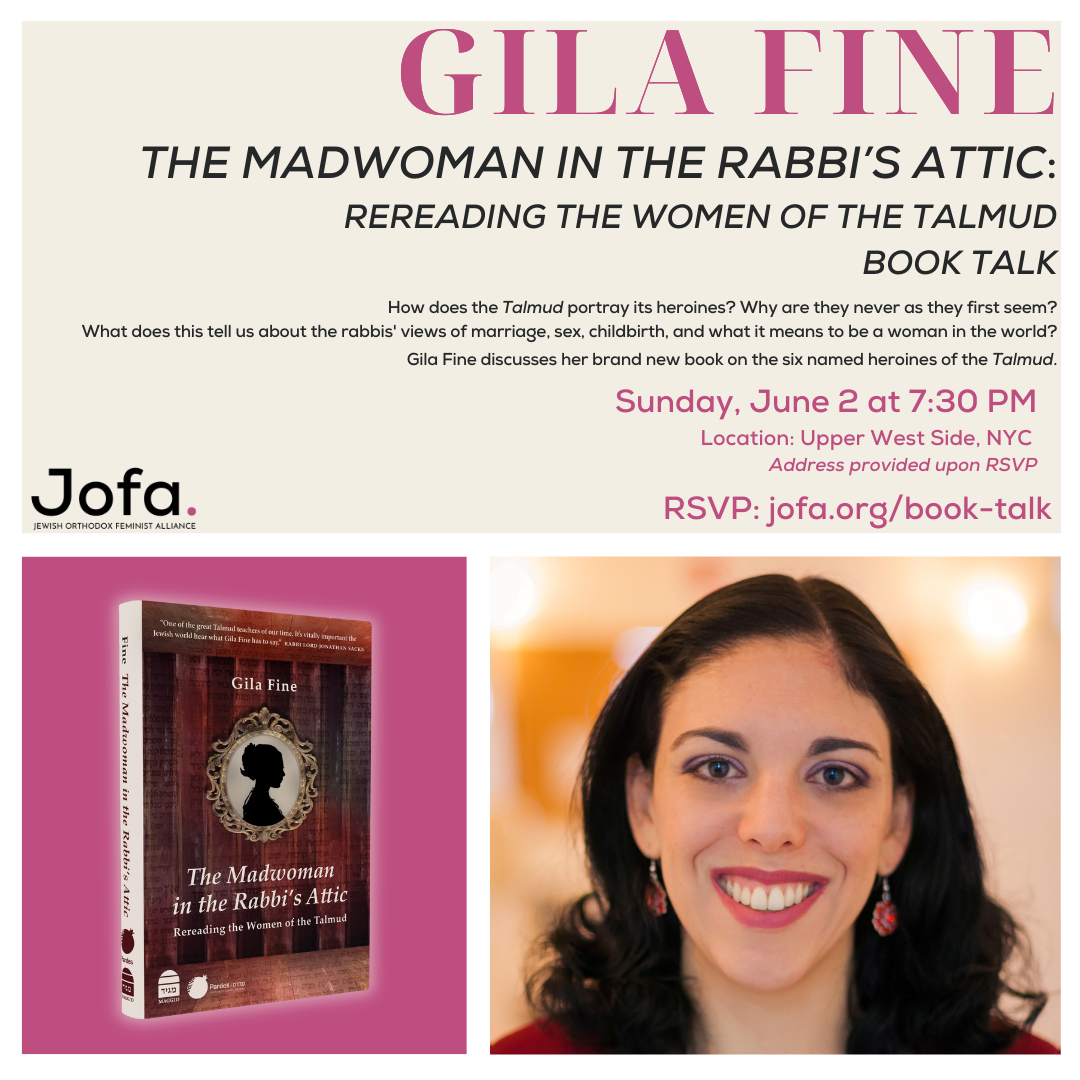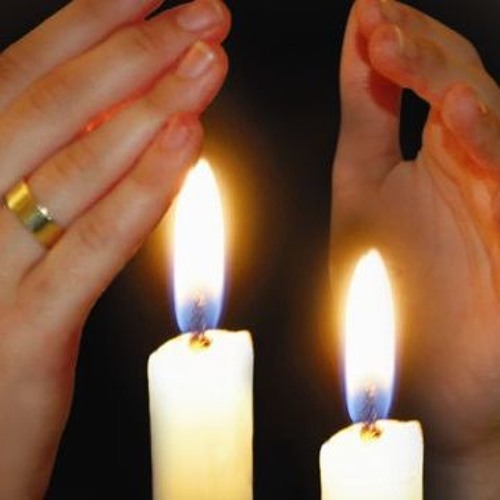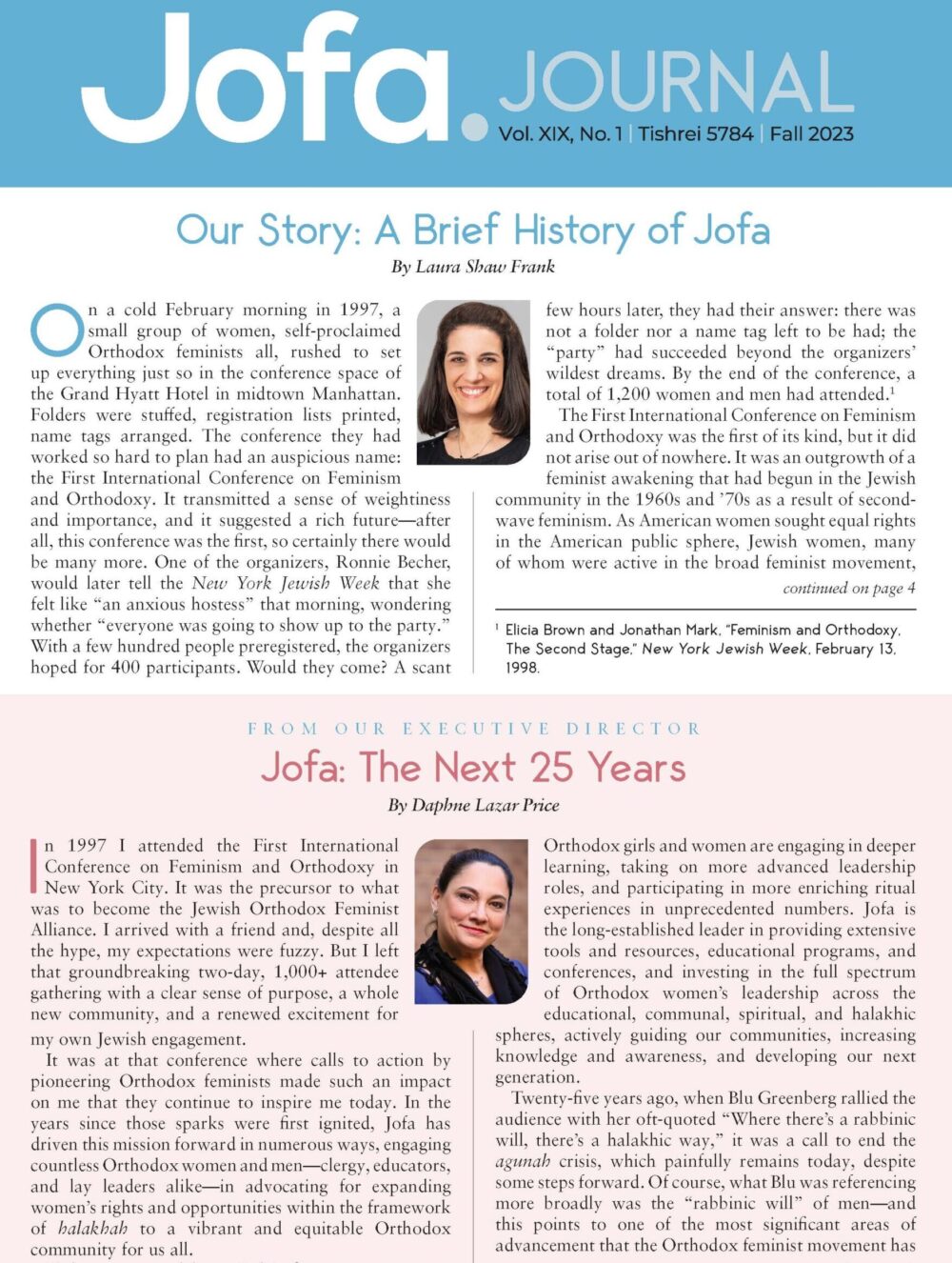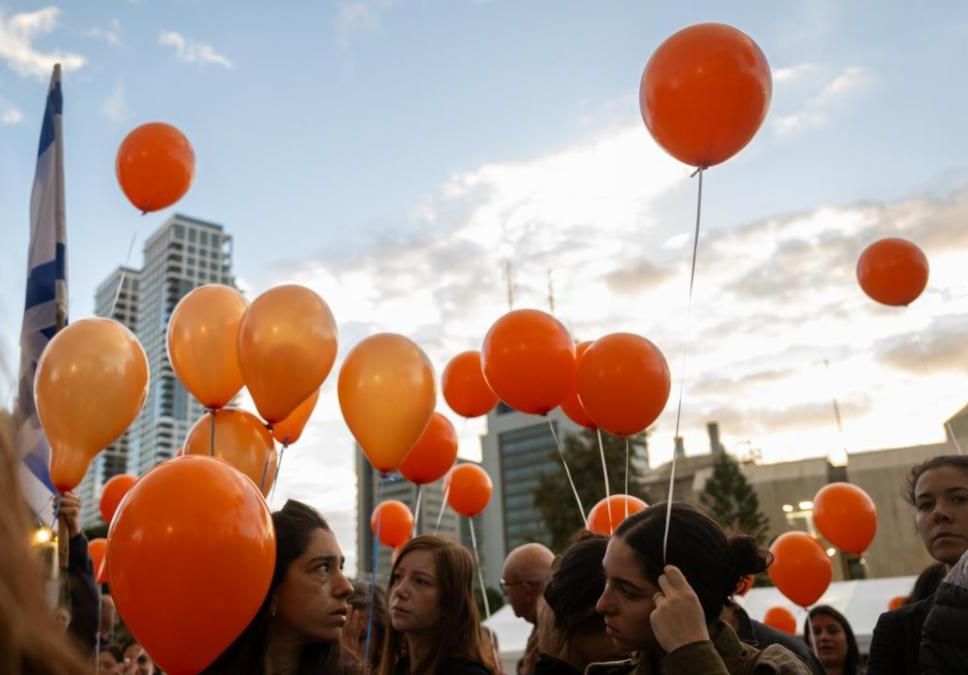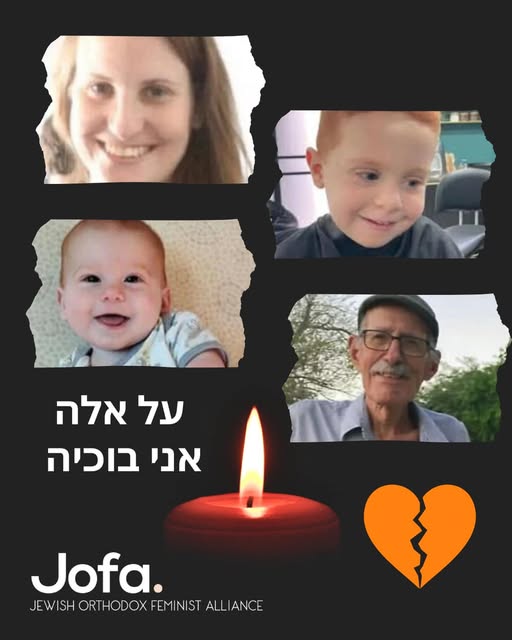It’s Both Public and Private
By Pam Scheininger
The Call for Articles for this edition of the JOFA Journal began with this hook: “Our awareness of our human capacity for reproduction is a vital aspect of our view of our bodies and ourselves stretching from menarche to menopause.” As women, we are acutely aware of this aspect of our lives, particularly as experienced within a society and religious framework that prioritize and honor reproduction and family. Although certainly both men and women struggle with reproductive challenges, it is within women’s bodies that these challenges manifest themselves. Month after month, even year after year, women experience within their very essence the joy, frustration, pain, and longing associated with their reproductive journey.
Halakhah prescribes an affirmative obligation of p’ru u’rvu (“be fruitful and multiply”), which is incumbent upon men but cannot be fulfilled without the participation of women and the cooperation of their bodies in both the act of procreation itself and the ability to carry a fetus to term. This mitzvah is performed within myriad, complex laws of taharat hamishpaḥִah (family purity), whose boundaries establish the opportunities for procreation, while also presenting challenges to its attainment. A disproportionate share of the burden of these laws falls on women, who bear the obligations to count days and to familiarize themselves with ketamim (stains) and hargashot (feelings), who prepare for and visit the mikveh whether embracing the opportunity for reproduction or struggling with infertility, and who must affirmatively state whether they are permitted to engage in sexual relations. What, then, for those among us whose experience of reproduction is painful, perhaps because they do not want to have children or because they cannot, whether due to primary or secondary infertility, financial constraints, the challenge of having children outside of marriage, abusive or unhealthy relationships, or for many other reasons? And for women who do become pregnant but do not give birth because of circumstances within or beyond their control, how do they reconcile what their bodies cannot or choose not to do with what is viewed as “normal” and desired by their society and the religious community? For women, this dichotomy is not something external; it is experienced within our actual bodies, as well as our minds and hearts.
Furthermore, we cannot ignore the political environment within which these experiences are taking place today. Reproductive rights are under attack in every branch of the federal government, as demonstrated by limitations placed on the acquisition of contraceptives, whether through restrictions on access or financial constraints, or the perpetual threats to abortion rights and the ability of every woman to make a choice in and for her own body.
The conversation about reproduction and reproductive rights, particularly as filtered through the lens of halakhah and the Orthodox world, is thus both deeply private and personal and decidedly public and political. It is essential that we continue to explore these topics in the pages of our journal, with men and women in our broader community; with our children, spouses, and families; and with our clergy, in spaces both personal and political.

